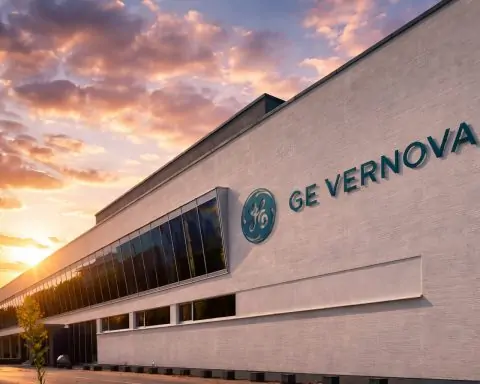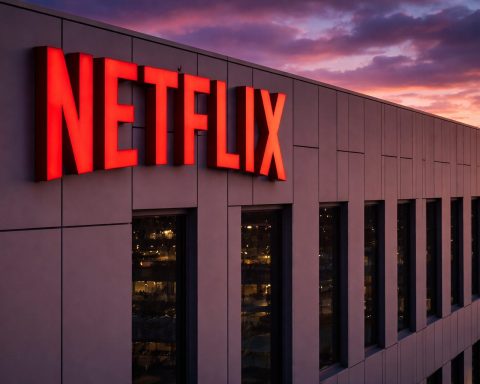- HTS use numerous narrow spot-beams and on-board processing to deliver dramatically higher data rates than legacy FSS, with platforms like Boeing 702X and SES-17 featuring fully digital, reconfigurable payloads.
- HTS constellations can deliver terabits of capacity worldwide to power broadband, backhaul, IoT and government networks.
- Modern HTS platforms operate primarily in Ku/Ka-bands and increasingly in V/Q/KuL bands to support mobility.
- In aviation, Ka-band GEO and LEO HTS provide in-flight connectivity on thousands of passenger aircraft, with SES-17 Ka-band HTS expected to meet exponential airline connectivity needs.
- On-the-move broadband can deliver gigabit links to moving antennas for military, emergency-response and commercial users.
- Consumer broadband via HTS powers HughesNet and ViaSat, and Euroconsult projects demand rising from about 2.5 Tbps in 2022 to about 14.5 Tbps by 2030.
- Global HTS capacity is forecast to grow from 15.397 Tbps in 2022 to 62.656 Tbps by 2026, with NGSO contributing about 55.7 Tbps in 2026 and NGSO expected to supply roughly 90% of capacity by the late 2020s.
- Euroconsult projects HTS demand rising to ~7,000 Gbps by 2025 and ~14,500 Gbps by 2030, while NSR forecasts up to ~46,100 Gbps by 2032.
- Major operators and constellations include SpaceX Starlink with tens of thousands of planned LEO satellites (Goldman Sachs estimates ~70,000 in five years), OneWeb (~648 MEO satellites), Telesat Lightspeed, Amazon Project Kuiper (~3,236 LEO satellites), and GEO/MEO players like ViaSat-3 trio, Jupiter, Intelsat EpicNG, Eutelsat/OneWeb, and SES O3b mPOWER.
- Regulatory and spectrum developments include WRC-23 Ka-band allocations enabling NGSO Earth Stations In Motion in aviation/maritime and inter-satellite links in the 18–30 GHz range, plus Ofcom NGSO licensing timelines around three months versus about 42 days for GEO licenses, and 3GPP Rel-18 NTN standards for 5G integration.
HTS Technology Overview
High-Throughput Satellites (HTS) are spaceborne relays designed to deliver dramatically higher data rates than traditional wide-beam satellites. They achieve this through numerous narrow spot-beams and advanced on-board processing, allowing aggressive frequency reuse. In practice, an HTS can deliver multiple times the throughput of a legacy FSS satellite using the same spectrum [1]. Modern HTS platforms operate mainly in Ku/Ka-bands (and increasingly V/Q/KuL-band for mobility), using digital payloads and beam-forming antennas. For example, the upcoming Boeing 702X platform and SES-17 satellite feature fully digital, reconfigurable payloads that let operators reshape coverage and capacity on demand [2] [3]. These advances mean HTS constellations (including GEO, MEO and LEO) can flexibly deliver terabits of capacity worldwide to power broadband, backhaul, IoT and government networks.
Applications Across Market Segments
HTS services span mobility, enterprise, consumer, backhaul, and government/military sectors. Mobility uses (in-flight, maritime, land-mobile) are among the fastest-growing. In aviation, HTS (especially Ka-band GEO and LEO constellations) now provide in-flight connectivity (IFC) on thousands of passenger aircraft. For example, SES notes its upcoming SES-17 Ka-band HTS will “meet the exponential connectivity needs of airline passengers of tomorrow,” covering the busiest air routes [4]. Similarly, cruise ships, maritime commerce vessels, and offshore platforms increasingly deploy HTS links for passenger Internet and operational connectivity. “On-the-move” broadband is feasible on land vehicles, trains and even buses – modern HTS systems can deliver gigabit links to moving antennas for military, emergency-response and commercial users [5] [6].
Enterprise and backhaul applications also drive HTS uptake. Enterprises – from oil rigs and mines to rural schools – use HTS VSAT links where fiber is unavailable. Satellite backhaul (connecting remote cellular towers and broadband POPs) is a critical use case: operators in emerging markets increasingly “leapfrog” terrestrial networks by using HTS to feed base stations in underserved areas [7] [8]. For instance, analysts note that as HTS capacity expands, demand for satellite-based cellular backhaul is rising year-over-year in regions like Southeast Asia [9]. HTS’s high capacity and lower per-bit cost make it economically viable for growing 4G/5G backhaul networks where fiber or microwave are impractical [10].
Consumer broadband (Direct-to-Home and rural Internet) is another key segment. HTS satellites power services like HughesNet and ViaSat’s home Internet, reaching millions of users worldwide. Demand from home broadband is expected to dominate overall HTS volume: Euroconsult projects that “increase in demand is expected to be driven largely by consumer broadband,” pushing aggregate HTS demand from ~2.5 Tbps in 2022 to ~14.5 Tbps by 2030 [11]. (See Capacity Forecasts below.) Governments also subsidize rural broadband via satellite to achieve digital-inclusion goals, further boosting consumer satellite broadband.
Government and military users rely on HTS for secure, global communications. Defense forces increasingly complement their own satellites with commercial HTS capacity. For example, the Viasat-3 HTS constellation promises ~100 Gbps per satellite – far exceeding legacy military FSS links [12] – which can support ISR and command networks. In fact, one analysis forecasts a ~14× increase in secure governmental SATCOM demand between 2025 and 2040 (to ~190 Gbps) [13], driven by conflict, disaster response and national broadband projects. In sum, governments use HTS for “hard” use cases (military comms, border security) and “soft” objectives (digital diplomacy, homeland connectivity) [14] [15].
Global HTS Capacity Forecasts (2025–2035)
Analysts agree that global HTS capacity will surge in the 2025–2035 period, largely fueled by new LEO/MEO constellations. For example, Euroconsult projects total HTS supply will grow from ~15.4 Tbps in 2022 to ~62.7 Tbps by 2026 – roughly a four-fold jump [16]. This boom is overwhelmingly in NGSO orbits: NGSO-sourced HTS capacity climbs from ~12.4 Tbps (2022) to ~55.7 Tbps (2026), while GEO HTS roughly doubles (from ~3.0 Tbps to ~6.9 Tbps) [17]. In other words, by the late 2020s NGSO (mostly LEO/MEO) systems are expected to supply nearly 90% of HTS capacity worldwide [18].
| Year | GEO HTS Supply (Gbps) | NGSO HTS Supply (Gbps) | Total Supply (Gbps) |
|---|---|---|---|
| 2022 | 2,951 | 12,446 | 15,397 |
| 2023 | 5,639 | 19,374 | 25,013 |
| 2024 | 6,637 | 24,196 | 30,833 |
| 2025 | 6,901 | 30,637 | 37,539 |
| 2026 | 6,917 | 55,740 | 62,656 |
Table 1: Projected global HTS capacity supply by orbit [19].
Demand forecasts are less certain but also show rapid growth. Euroconsult (2022 data) estimates global HTS demand rising from ~2,500 Gbps (2022) to ~7,000 Gbps by 2025 and ~14,500 Gbps by 2030 [20]. By contrast, Northern Sky Research (NSR) offers a much more aggressive outlook: NSR projects HTS capacity demand soaring to ~46,100 Gbps by 2032 [21] (implying a compound annual growth near 30%). Even the conservative estimates imply multi-fold increases – for example, Euroconsult expects in-flight connectivity demand (aviation IFC) alone to jump ~12× to ~930 Gbps by 2030 [22].
Regional and segment breakdowns highlight imbalances. Asia–Pacific and Latin America are forecast to see the fastest satellite broadband growth: APAC satellite subscribers could rise from ~0.9 million (2022) to over 38 million by 2030 [23]. In North America and Europe, rapid LEO rollouts (e.g. Starlink, Kuiper) push high-user counts, whereas many developing regions start from low bases. For example, SES projects connected aircraft in Asia/Oceania to leap from 356 in 2015 to 6,256 by 2025 (a ~17× increase), far outpacing growth in North America [24]. Segment-wise, consumer broadband is expected to remain the largest slice of demand, while mobility (aero/maritime) and government/military share also expand. Enterprise and backhaul segments will grow steadily but remain smaller than mass-market broadband.
Major Operators, Constellations and Innovations
The HTS arena is dominated by a mix of established satellite operators and fast-emerging new entrants. In GEO/MEO, major players include Viasat (ViaSat-3 trio), EchoStar/Hughes (Jupiter fleet), Intelsat (EpicNG satellites), Eutelsat/OneWeb (OneWeb MEO), SES (O3b mPOWER MEO + small GEO HTS), and the newly merged Viasat-Inmarsat (Global Xpress Ka-band). These operators are launching next-generation HTS payloads with dozens of beams and all-digital flexibility. For example, Hughes’ upcoming JUPITER 3 GEO-HTS and Viasat-3 satellites each promise >1 Tbps capacity via multi-gigabit beams.
In the NGSO segment, SpaceX’s Starlink leads by satellite count (tens of thousands planned LEO), followed by OneWeb (~648 MEO satellites for global coverage) and Telesat Lightspeed (LEO constellation). Amazon’s Project Kuiper aims for ~3,236 LEO satellites to enter service by late 2020s. Other notable constellations include China’s Guowang, Russia’s Sphere, and SES’s O3b (Medium Earth Orbit). According to industry data, “LEO constellations like those offered by … Starlink and Amazon’s Project Kuiper” will fly hundreds to thousands of small satellites at 500–2,000 km, delivering fiber-like latency (20–40 ms) and using phased-array antennas for dynamic beamforming [25]. By contrast, MEO systems (e.g. SES O3b) offer higher per-satellite throughput (~100+ Gbps) at ~100–150 ms latency, ideal for trunking, backhaul, and maritime/air links [26].
Technological innovations further reshape capacity dynamics. Software-defined satellites (fully digital payloads) allow on-orbit reconfiguration of beams and spectrum allocation [27]. Optical inter-satellite links (ISLs) are being deployed (Starlink already uses lasers) to create space-based mesh networks, reducing reliance on Earth gateways [28]. Advanced antenna technologies (e.g. multi-beam Ka-band arrays, electronically-steered beams) boost capacity to thousands of users concurrently. On-board computing and artificial intelligence enable autonomous traffic routing and network management across GEO, MEO and LEO layers. In the user segment, multi-orbit terminals and phased-array antennas are becoming common, supporting smooth handoffs between GEO and LEO satellites for enterprise and mobility use cases. All these innovations – along with falling launch costs and satellite manufacturing improvements – drive a constant increase in deliverable HTS throughput.
Key Trends (NGSO Expansion, Payload Flexibility, SD-Satellites)
NGSO Expansion: The ongoing explosion of LEO/MEO constellations is the clearest trend. Industry forecasts anticipate on the order of tens of thousands of new satellites over 2025–2030. Goldman Sachs estimates ~70,000 LEO satellites could be launched in the next five years [29]. This NGSO buildout drives nearly all the new HTS supply: one report notes global HTS capacity is expected to exceed 60 Tbps by 2026 primarily due to NGSO fleets [30]. Regulators have responded with new spectrum rules and constellation coordination frameworks to manage the influx. For users, NGSO means ultra-low latency connectivity (comparable to fiber) becoming widely available – boosting new services like 5G-enabled IoT, mobile backhaul and cloud access.
Satellite Payload Flexibility: On-orbit agility is a major theme. New HTS satellites increasingly feature beam-hopping and reconfigurable capabilities, allowing operators to shift capacity hotspots in real time. For example, digital processors can redirect RF power between beams or change polarization to meet traffic demands. This flexible architecture helps fill demand spikes (e.g. disaster zones) and adapt service footprints. Operators are also launching multi-band satellites (e.g. hybrid Ka/Ku/C-band payloads) that can reassign spectrum to mitigate interference or suit different markets. These advances mean satellite constellations are more software-driven: we are moving from fixed hardware to networks that can be reprogrammed in space. Industry analysts explicitly list “software-defined satellites” and “increased capacity offered by HTS and higher frequency bands” as key trends [31].
Software-Defined Satellites: Relatedly, several vendors now offer “software-defined” satellite buses whose entire communications payload is digital. These allow fully remote reconfiguration of beams, frequencies and routing. As one industry report notes, SD-satellites “can shift capacity on-demand” and “support more flexible coverage” without new hardware [32]. Examples include Boeing’s 702X and Airbus’ OneSat (fully digital beam-forming) platforms. Over time, the software-defined paradigm is expected to empower satellite networks that resemble telecom clouds in orbit, blurring lines between space and ground networks.
Convergence with 5G and Cloud: Satellite is increasingly integrated into terrestrial 5G and cloud ecosystems. 3GPP Release 17/18 standardized non-terrestrial network (NTN) support, enabling 5G devices to use satellite backhaul or direct links. HTS operators are partnering with telcos to offer hybrid services (e.g. satellite-LTE/5G backup). The role of satellite in multi-access edge computing and global content delivery is growing. The Avenga table above highlights this: NTNs provide mobility and broad coverage, complementing 5G’s urban fiber (and in the future becoming a “5G-compliant NTN” as standards evolve
Demand Drivers (Inclusion, IoT, Remote Access, Cloud)
Demand for HTS capacity is fueled by several converging forces. Digital inclusion drives ubiquitous coverage: public programs worldwide seek to connect the unconnected (rural schools, remote villages, ships at sea). Satellite is often the only viable solution where fiber or wireless cannot reach. NGSO constellations, in particular, are touted as “democratizing access to broadband, reaching remote or rural areas” [33]. Global initiatives (e.g. UN SDGs, national broadband plans) continue to inject funding into satellite projects aimed at closing the digital divide.
Internet of Things (IoT) and M2M: The explosion of IoT devices – from environmental sensors to autonomous vehicles – creates new bandwidth needs in far-flung locations. Emerging applications (precision agriculture, asset tracking, utility monitoring) rely on satellite links when terrestrial networks are absent. Analysis notes that NGSO satellites “support the Internet of Things (IoT) and machine-to-machine communications, driving advancements in various industries” [34]. Indeed, industry surveys estimate that only ~10% of the world’s landmass has fiber or cellular; to connect billions of IoT sensors globally, satellite backhaul becomes critical. Low-power LEO IoT constellations (e.g. NB-IoT or LoRa via satellite) further amplify this trend.
Ubiquitous Connectivity & Cloud: The COVID-era surge in remote work, video streaming and cloud services has raised baseline bandwidth demand everywhere – even in satellites’ domain. Cloud and edge computing require low-latency, high-throughput connections; satellites can bridge remote sites into the cloud. As one analyst notes, “cloud services, IoT devices, and remote working have all contributed to the rapid growth of digital demands, highlighting the shortcomings of ground-based networks” [35]. In practice, businesses and consumers now expect “anytime, anywhere” broadband, pushing service providers to deploy HTS solutions. Government and enterprise procurement of satellite bandwidth is increasingly justified on cybersecurity and network resilience grounds (e.g. providing alternative paths for critical data to the cloud).
Special Events and Mobility: One-time events (disaster recovery, large public gatherings, naval operations) also spur satellite usage. For example, after wildfires or earthquakes, temporary HTS deployments often provide emergency Internet and comms. Similarly, rising demand for connectivity on cruise ships, trains and airliners means that popular travel corridors generate substantial Mbit/s load – almost like “floating cellular networks” [36] [37]. The growth of auto-connected vehicles and maritime tourism suggests these segments will become constant background demand on HTS networks.
Policy, Regulatory and Spectrum Considerations
The HTS market is strongly shaped by government policy, spectrum rules and regulation. A few key factors stand out:
- Spectrum Reallocation: Crowded mid-bands (e.g. C-band) are being repurposed for terrestrial 5G in many countries. In the U.S., for example, the FCC mandated clearing 3.7–3.98 GHz of legacy C-band (GEO FSS) by late 2023, incentivizing operators (SES, Intelsat, et al.) to migrate to other bands [38]. SES and Intelsat cleared enough C-band to earn ~$2 billion in FCC payments, but at the cost of shifting video distribution to Ka-band and moving HTS customer links. Similar reallocations in Europe and Asia are under discussion, pressuring satellite providers to invest in new satellites and dual-use architectures.
- WRC-23 Outcomes: The 2023 ITU World Radiocommunication Conference made several allocations important to HTS. Notably, it harmonized Ka-band spectrum to enable NGSO satellite Earth Stations In Motion (ESIMs) in aviation/maritime (17.7–18.6, 18.8–19.3, 19.7–20.2 GHz downlink) [39]. WRC-23 also added global inter-satellite service allocations in parts of Ka/Ku/L bands (e.g. 18–30 GHz range) [40], facilitating laser/optical links between satellites. These decisions ease regulatory barriers for global HTS networks and new constellations.
- Licensing and Orbit Coordination: New NGSO constellations face complex licensing. For example, the UK’s Ofcom reports that NGSO satellite license applications can take three months or more, requiring public consultation, whereas GEO licenses may be approved in ~42 days [41]. Similar procedures apply in the U.S. (FCC) and elsewhere, often subject to filings that coordinate spectrum and orbital slots. SpaceX’s Starlink and OneWeb have had to work through these regulatory processes in dozens of countries. The entry of thousands of LEO satellites has also raised issues of space traffic management and debris mitigation. Regulators are increasingly demanding collision avoidance plans and end-of-life deorbiting; constellations must track and coordinate thousands of moving objects (as mandated by ITU filings).
- 5G/NTN Standards and Sharing: National regulators are preparing to integrate satellite into mobile networks. Europe and the 3GPP community are advancing Non-Terrestrial Network (NTN) standards (e.g. 3GPP Rel-18) so that 5G New Radio can operate over HTS. Spectrum sharing rules (coexistence of satellite and terrestrial 5G) are under active debate – e.g. how to protect GEO VSAT downlinks near 5G bands. The International Telecommunication Union (ITU) supports best practices for NGSO and encourages regulators to coordinate spectrum assignments to avoid harmful interference [42]. This evolving regulatory landscape will influence where and how new HTS capacity can be used – for instance, some bands (V band, Q band) are expected to open up for NGSO HTS in the 2020s.
Supply-Demand Inflection Points and Risks
Today’s market faces both oversupply and undersupply pressures, which may alternate over 2025–2035. In the near term (mid-2020s), HTS supply is growing faster than proven demand. As Table 1 shows, Euroconsult’s projections imply ~37.5 Tbps of HTS capacity by 2025, whereas demand is only ~7 Tbps [43] [44] – suggesting a large surplus. In fact, industry data mark a portion of capacity as “committed but unused,” hinting that some satellites may have idle bandwidth if uptake lags [45]. This could squeeze prices and profitability for operators in the short run.
However, by the end of the decade demand may catch up. If consumer and enterprise services take off as expected (and if government mobilizes satellite demand), total requirement could climb toward or beyond available capacity. NSR’s 46 Tbps forecast by 2032 [46] even exceeds current supply plans – pointing to possible shortages. Specific segments show divergent trends: for example, the aviation IFC market is exploding (EU demand +23× by 2030 [47]) while video distribution via satellite may plateau. Policy initiatives (like subsidized rural broadband or IoT rollouts) could push demand higher.
In summary, the “inflection” may come when LEO fleets are fully deployed (~2025–2030). If end-user adoption (e.g. Starlink subscribers, maritime adopters) is slower than assumed, operators risk an oversupply glut. Conversely, if new applications emerge (non-traditional IoT use cases, direct-to-device 5G, or surge defense demand), capacity could become scarce in parts of the spectrum or for key orbits. The market will need to balance these dynamics: too much spare HTS capacity could drive industry consolidation, while any persistent shortages could bottleneck growth of satellite-enabled services.
In sum, the HTS era entering 2025–2035 will see dramatic swings: a tidal wave of new capacity on one hand, and accelerating consumption on the other. Stakeholders will watch for tipping points (e.g. when supply growth slows or demand accelerates) to gauge whether the industry faces an “oversupply bust” or a “capacity crunch.”
Sources: Authoritative industry analyses (Euroconsult, NSR, EUSPA, Goldman Sachs) and satellite operator reports were used to compile this assessment [48] [49] [50] [51]. The figures and tables above are derived from these sources.
References
1. assets.publishing.service.gov.uk, 2. assets.publishing.service.gov.uk, 3. www.euspa.europa.eu, 4. www.ses.com, 5. spacebridge.com, 6. www.ses.com, 7. interactive.satellitetoday.com, 8. interactive.satellitetoday.com, 9. interactive.satellitetoday.com, 10. interactive.satellitetoday.com, 11. assets.publishing.service.gov.uk, 12. interactive.aviationtoday.com, 13. www.euspa.europa.eu, 14. www.euspa.europa.eu, 15. interactive.aviationtoday.com, 16. assets.publishing.service.gov.uk, 17. assets.publishing.service.gov.uk, 18. assets.publishing.service.gov.uk, 19. assets.publishing.service.gov.uk, 20. assets.publishing.service.gov.uk, 21. digitalregulation.org, 22. assets.publishing.service.gov.uk, 23. www.businesswire.com, 24. www.ses.com, 25. www.avenga.com, 26. www.avenga.com, 27. www.euspa.europa.eu, 28. www.avenga.com, 29. www.goldmansachs.com, 30. assets.publishing.service.gov.uk, 31. www.euspa.europa.eu, 32. www.euspa.europa.eu, 33. digitalregulation.org, 34. digitalregulation.org, 35. www.avenga.com, 36. www.ses.com, 37. spacebridge.com, 38. payloadspace.com, 39. www.hoganlovells.com, 40. www.hoganlovells.com, 41. assets.publishing.service.gov.uk, 42. digitalregulation.org, 43. assets.publishing.service.gov.uk, 44. assets.publishing.service.gov.uk, 45. assets.publishing.service.gov.uk, 46. digitalregulation.org, 47. assets.publishing.service.gov.uk, 48. assets.publishing.service.gov.uk, 49. assets.publishing.service.gov.uk, 50. digitalregulation.org, 51. www.euspa.europa.eu










